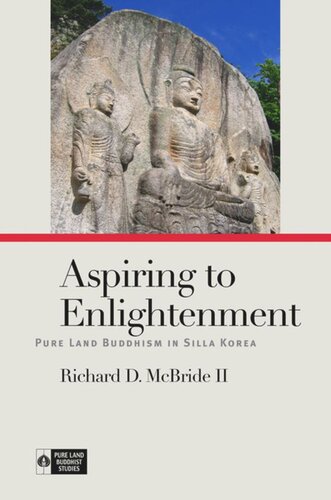

Most ebook files are in PDF format, so you can easily read them using various software such as Foxit Reader or directly on the Google Chrome browser.
Some ebook files are released by publishers in other formats such as .awz, .mobi, .epub, .fb2, etc. You may need to install specific software to read these formats on mobile/PC, such as Calibre.
Please read the tutorial at this link: https://ebookbell.com/faq
We offer FREE conversion to the popular formats you request; however, this may take some time. Therefore, right after payment, please email us, and we will try to provide the service as quickly as possible.
For some exceptional file formats or broken links (if any), please refrain from opening any disputes. Instead, email us first, and we will try to assist within a maximum of 6 hours.
EbookBell Team

4.1
90 reviewsCentered on the practice of seeking rebirth in the Pure Land paradise Sukhāvatī, the Amitābha cult has been the dominant form of Buddhism in Korea since the middle of the Silla period (ca. 300–935). In Aspiring to Enlightenment, Richard McBride combines analyses of scriptural, exegetical, hagiographical, epigraphical, art historical, and literary materials to provide an episodic account of the cult in Silla times and its rise in an East Asian context through the mutually interconnected perspectives of doctrine and practice.
McBride demonstrates that the Pure Land tradition emerging in Korea in the seventh and eighth centuries was vibrant and collaborative and that Silla monk-scholars actively participated in a shared, international Buddhist discourse. Monks such as the exegete par excellence Wŏnhyo and the Yogācāra proponent Kyŏnghŭng did not belong to a specific sect or school, but like their colleagues in China, they participated in a broadly inclusive doctrinal tradition. He examines scholarly debates surrounding the cults of Maitreya and Amitābha, the practice of buddhānusmṛti, the recollection of Amitābha, the “ten recollections” within the larger Mahāyāna context of the bodhisattva’s path of practice, the emerging Huayan intellectual tradition, and the influential interpretations of medieval Chinese Pure Land proponents Tanluan and Shandao. Finally, his work illuminates the legacy of the Silla Pure Land tradition, revealing how the writings of Silla monks continued to be of great value to Japanese monks for several centuries.
With its fresh and comprehensive approach to the study of Pure Land Buddhism, Aspiring to Enlightenment is important for not only students and scholars of Korean history and religion and East Asian Buddhism, but also those interested in the complex relationship between doctrinal writings and devotional practice “on the ground.”